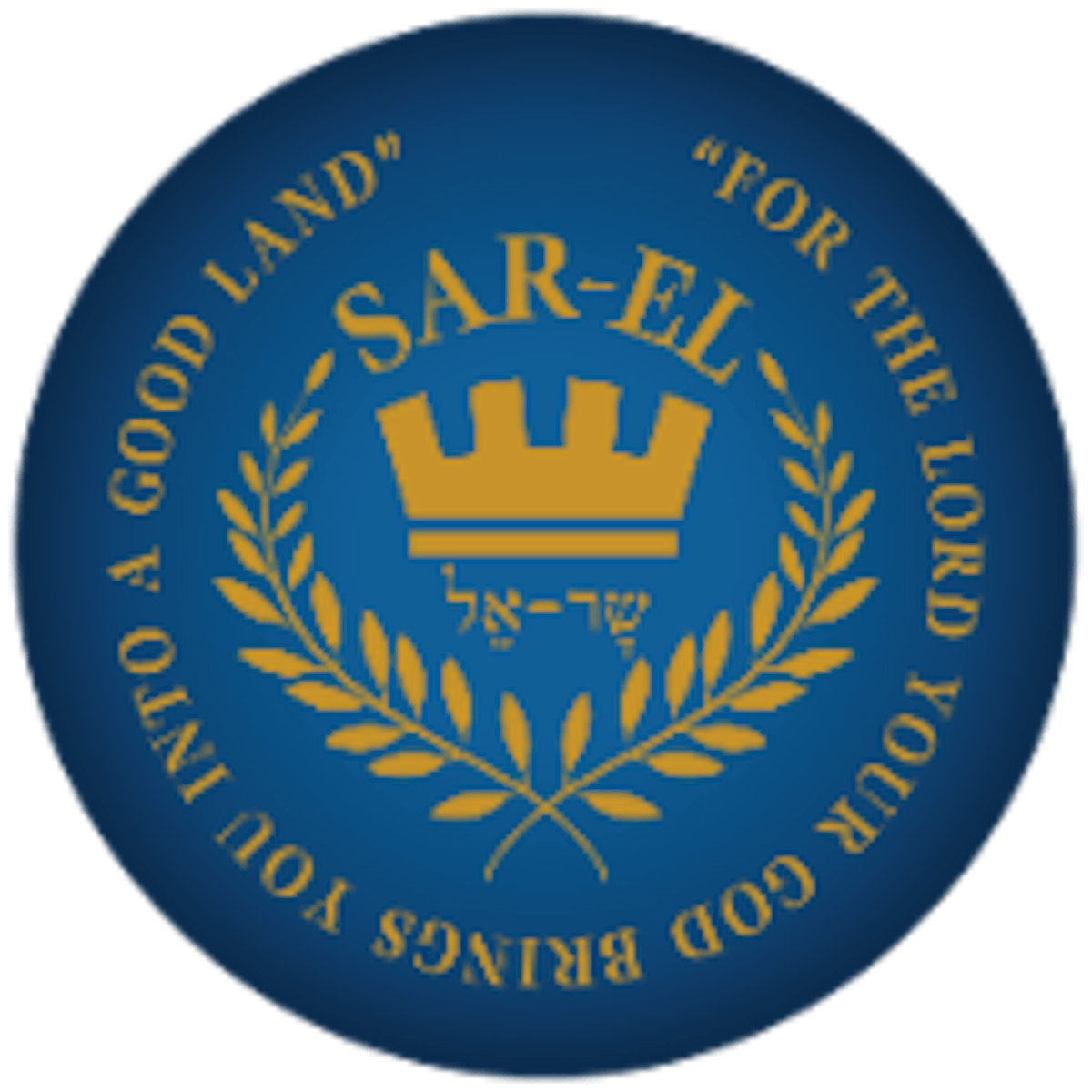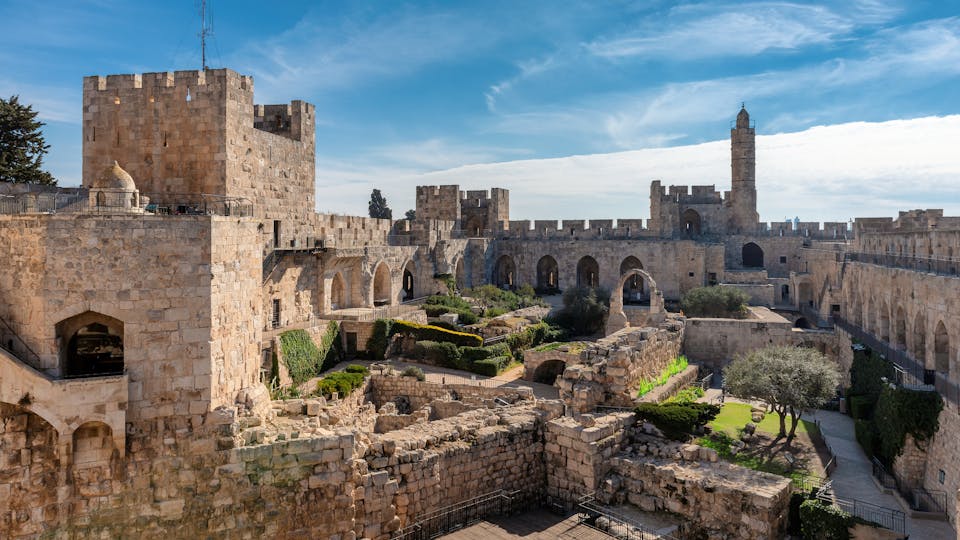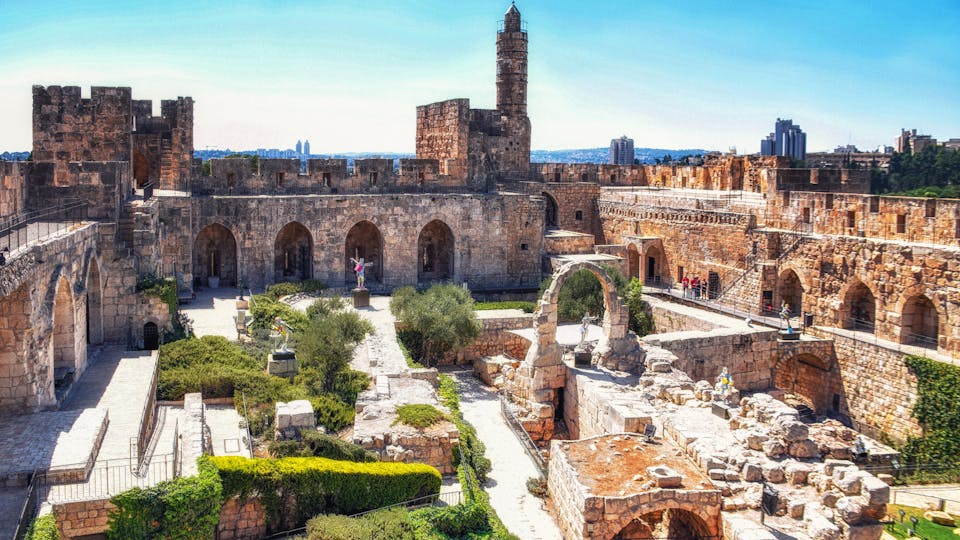Exploring the City of David: Unveiling Ancient Jerusalem's Heritage

Discover the City of David
The City of David, also known as Ir David in Hebrew, is considered the original core settlement of ancient Jerusalem. Nestled near the Gihon Springs, this ancient city was initially home to the Jebusites in the land of Canaan. In the 10th century BC, King David conquered the city and established Jerusalem as his capital, aiming to unite the twelve tribes of Israel.
David built his palace in this newly established capital, fortified the area, and transformed it into a thriving economic, political, and religious hub. It was here that David stationed the Ark of the Covenant, setting the stage for the future Temple that his son Solomon would eventually build.
Archaeological Marvels in the City of David

The City of David is one of the most ancient and historically significant locations related to ancient Jerusalem. Archaeological excavations have uncovered artifacts that date back thousands of years, providing a glimpse into the city's rich history. One notable discovery is the Siloam Inscription, an ancient Hebrew inscription found in the Siloam Tunnel.
According to the Bible, King Hezekiah constructed this tunnel to connect the Gihon Spring outside the city walls to the Siloam Pool inside the city, ensuring a water supply during an Assyrian siege. This engineering feat was rediscovered by biblical Jerusalem expert Edward Robinson in 1838.
Another significant find is the Bulla of Gemariah, a postal seal impression belonging to a scribe mentioned in the Book of Jeremiah. This discovery further highlights the historical depth of the City of David.
Biblical Significance of the City of David
The City of David holds a prominent place in both the Old and New Testaments. In the Old Testament, Jerusalem is referred to as the City of David approximately 40 times. Key references include:
- 2 Samuel 5:7: "Nevertheless, David captured the fortress of Zion—which is the City of David."
- 2 Samuel 5:9-10: "David then took up residence in the fortress and called it the City of David. He built up the area around it from the terraces inward. And he became more and more powerful because the Lord God Almighty was with him."
- 1 Chronicles 11:7: "David then took up residence in the fortress, and so it was called the City of David."
During his reign, David transformed the city into a political and religious center and was buried there upon his death.
- 1 Kings 2:10: "Then David rested with his ancestors and was buried in the City of David."
The City of David also features in the Psalms, such as Psalm 48:1-2 and Psalm 122:5, emphasizing its spiritual significance.
Historical Events in the City of David

The City of David witnessed numerous significant biblical events, including:
- The Ark of the Covenant: David brought the Ark to Jerusalem, symbolizing God's presence (2 Samuel 6:12-19).
- David's Sin and Repentance: The infamous affair with Bathsheba and subsequent events took place here (2 Samuel 11-12).
- Solomon's Temple: Solomon built the First Temple within the City of David (1 Kings 6).
- The Split of the Kingdom: After Solomon's reign, Jerusalem remained the capital of Judah (1 Kings 12).
- Prophetic Activity: Prophets like Isaiah and Jeremiah delivered messages in Jerusalem.
- Babylonian Siege and Exile: The Babylonians destroyed Solomon's Temple in 586 BCE and exiled many Jews (2 Kings 25).
- Return from Exile and Second Temple: Post-exile, Jews rebuilt the Temple, known as the Second Temple (Ezra 1-6; Nehemiah 1-13).
Religious Significance
The City of David is revered in Judaism, Christianity, and Islam. It is home to important monuments such as the Western Wall, the Church of the Holy Sepulchre, and the Dome of the Rock.
Modern-Day City of David
Today, the City of David is a national archaeological park located near the Western Wall. Ongoing excavations continue to reveal new discoveries. Visitors can explore ancient streets, ruins, and impressive architecture through guided tours and interactive exhibits.
Frequently Asked Questions About the City of David
1. What is the City of David?
The City of David is the ancient core of Jerusalem, believed to be the original settlement established by King David in the 10th century BC. It is located near Gihon Springs and is considered one of the most significant archaeological and historical sites in the world.
2. Why is it called the City of David?
It is called the City of David because King David conquered the Jebusite city and established it as his capital, Jerusalem. He built his palace there and transformed it into Israel's political and religious center.
3. What are some key archaeological discoveries in the City of David?
Some notable discoveries include the Siloam Inscription in the Siloam Tunnel, attributed to King Hezekiah's engineering feats, and the Bulla of Gemariah, a postal seal impression linked to a scribe mentioned in the Book of Jeremiah. These findings offer invaluable insights into the city's ancient history.
4. What biblical events took place in the City of David?
The City of David is associated with many significant biblical events, such as the bringing of the Ark of the Covenant to Jerusalem by King David, the building of Solomon's Temple, and various prophetic activities. It is also the site of King David's sin and repentance and the location of his burial.
Plan Your Visit
Experience the historical and biblical significance of the City of David with Sar-El Tours and Conferences. Our customized tour services ensure a memorable journey through one of history's most monumental places.
Ready to explore the City of David? Contact your local travel agent or reach out to us for the best tour experience.